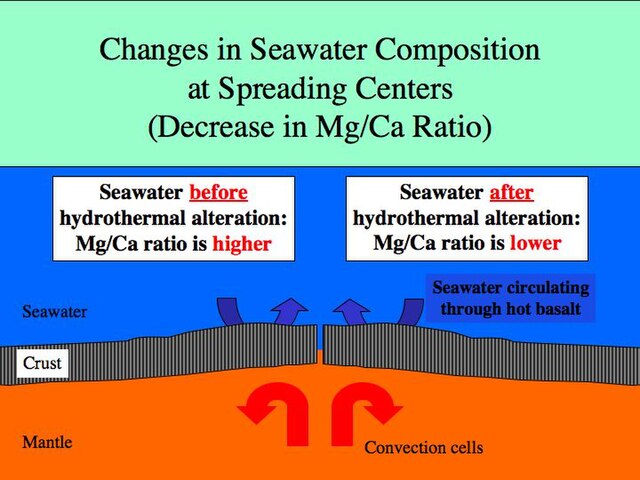A mid-ocean ridge (MOR) is a seafloor mountain system formed by plate tectonics. It typically has a depth of about 2,600 meters (8,500 ft) and rises about 2,000 meters (6,600 ft) above the deepest portion of an ocean basin. This feature is where seafloor spreading takes place along a divergent plate boundary. The rate of seafloor spreading determines the morphology of the crest of the mid-ocean ridge and its width in an ocean basin.
Rift zone in Þingvellir National Park, Iceland. The island is a sub-aerial part of the Mid-Atlantic Ridge
Magnesium/calcium ratio changes at mid-ocean ridges
Plate tectonics is the scientific theory that Earth's lithosphere comprises a number of large tectonic plates, which have been slowly moving since about 3.4 billion years ago. The model builds on the concept of continental drift, an idea developed during the first decades of the 20th century. Plate tectonics came to be accepted by geoscientists after seafloor spreading was validated in the mid-to-late 1960s.
Plate motion based on Global Positioning System (GPS) satellite data from NASA JPL. Each red dot is a measuring point and vectors show direction and magnitude of motion.
Alfred Wegener in Greenland in the winter of 1912–13.




